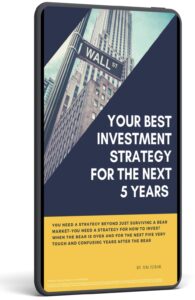Videos
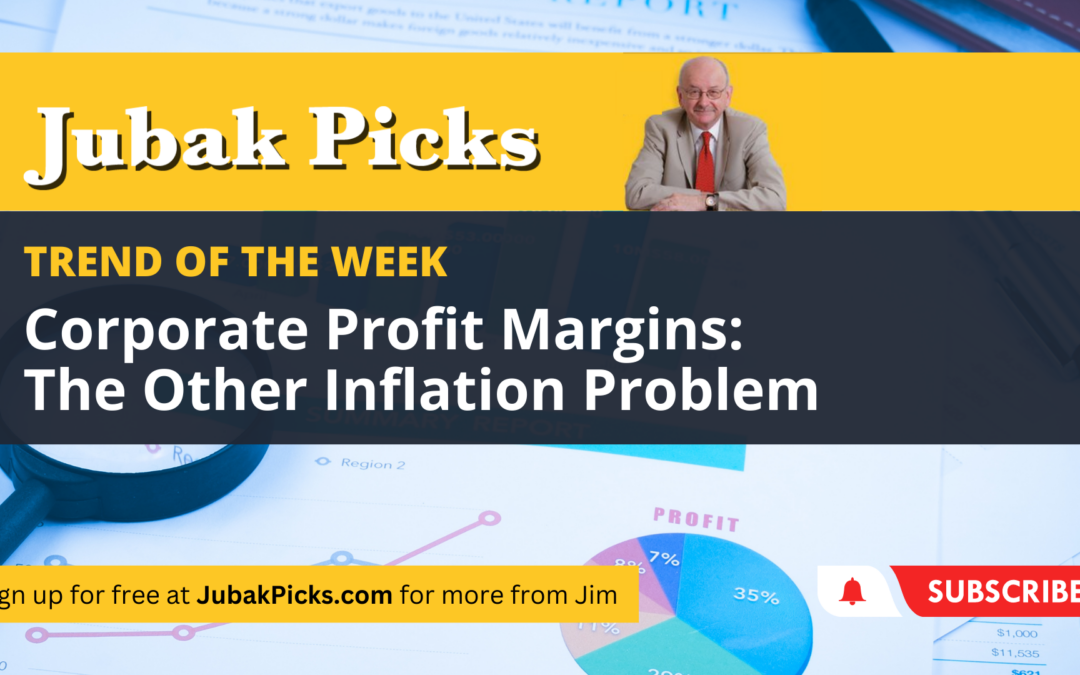
July 31, 2023 | Daily JAM, Videos |
Today’s Trend of the Week: Corporate Profit Margins–The Other Inflation Problem. The market is currently unsure if the Fed will continue to raise rates in September and December. Complicating the Fed’s job of bringing inflation: The trend in corporate profits. Profit margins are projected at 11.1% for the second quarter, down from 11.5% in the first quarter and down from 12.2% in this quarter a year ago. The five year average is 11.4%. Six straight quarters of declining profit margins have companies looking for more ways to bring the margins back up. Any company that still has pricing power is likely to be raising prices. As an example, Spotify raised its U.S. subscription price to $10.99 a month from $9.99 a month- a reasonable, one-dollar increase that will defend the company’s profit margin. The Fed, of course, doesn’t want companies raise prices as the central bank tries to stem inflation by raising interest rates. However for the time being, companies are doing whatever they can to increase profit margins and that includes raising prices on things like toothpaste, if they can, much to the Fed’s chagrin.
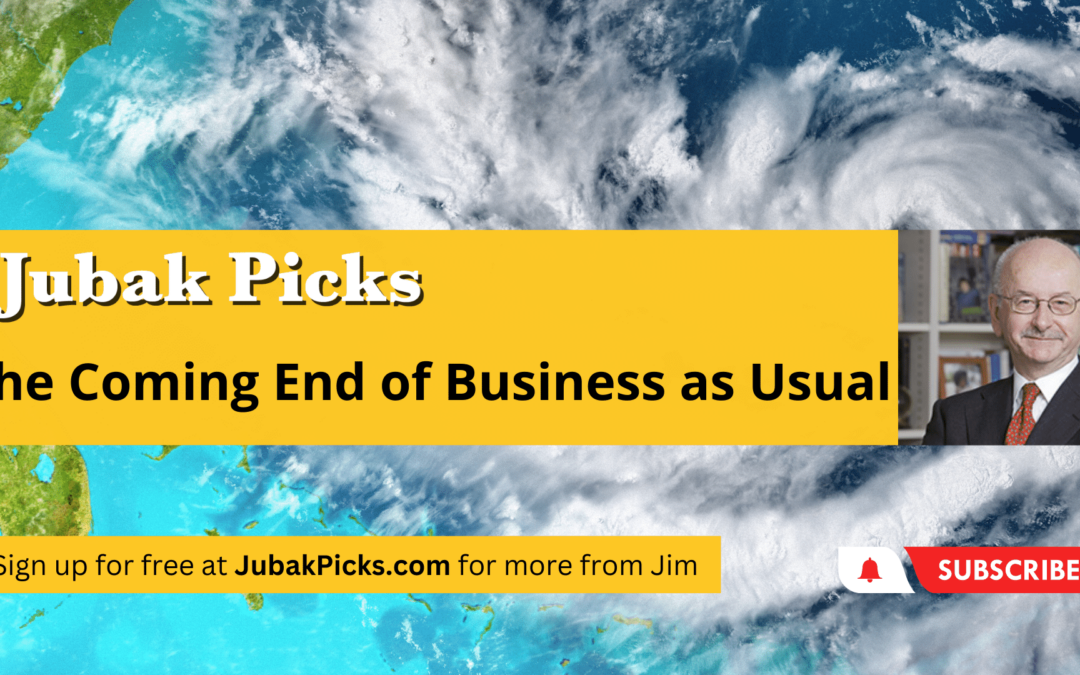
July 26, 2023 | Daily JAM, Videos |
Today’s video is The Coming End of Business as Usual. One of the most extraordinary things about the global climate catastrophe is how little effect it’s had on financial markets and their behavior and expectations. The markets still believe that The Fed and other world central banks are still in control of the global economy. Increasing that’s not so as thousands of people die from the heat, places become more and more unlivable, and entire industries face stunning systemic changes. An example of such change is the homeowners market in Louisiana, Florida and California. Louisiana, after dealing with increasingly damaging hurricanes in recent years, has had a dozen insurers go belly-up in the state. Now, about 100,000 households have been forced to move from private insurers into the insurance state fund. Just like Florida, this fiscally conservative state is moving more and more of its citizens to a state-run insurance pool. Sixteen storms and hurricanes in the past three years have resulted in $100-200 billion of property damage in Florida, causing insurance rates to go up 200% since 2019 and many insurers to cease doing business the state. Now 1.4 million people rely on Florida’s Citizens Property Plan, a state-run fund. The conservative state has to rely on–dare I say it, socialism–in order to keep its real estate market goin-it’s hard to get a mortgage to buy a house without homeowners insurance. In California, wildfires have caused homeowners insurance policies to go up 16%, with many insurers leaving the state. The state’s insurance plan called “FAIR” has seen enrollment double since 2019. These are examples of the ways in which capitalism and capital markets will change during this age of global catastrophe. I think we can expect more to come.
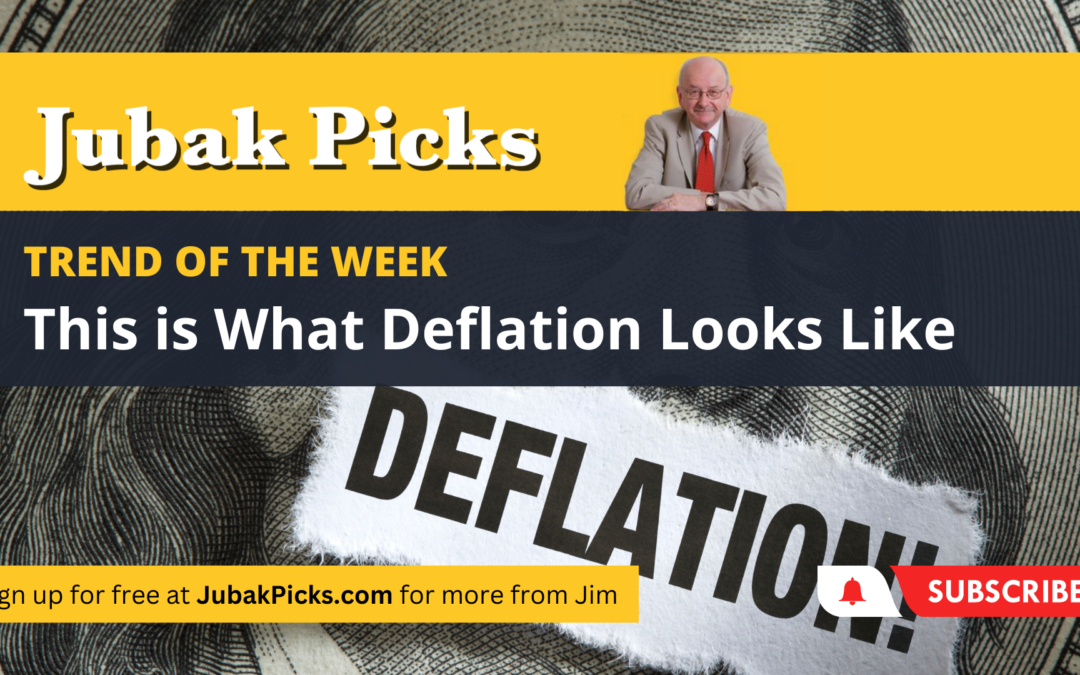
July 24, 2023 | Daily JAM, Videos |
Today’s Trend of the Week is This is What Deflation Looks Like. Last week, Ford announced it’s cutting the price of the Ford F-150 electric truck, the F-150 Lightning, by nearly $10,000. The prices had gone up when supplies were low, but now, Ford says that they’ve cut production costs, so they’re able to cut prices. Maybe. That’s one explanation anyway. But, the news came as Tesla’s long-awaited truck appears to be finally hitting the market (sometime this year.) There is an over-supply of electric vehicles in general as more and more car makers have pivoted to the EV, and the sector hasn’t grown as fast as the production. In order to keep market share in a young-fast growing industry, companies, like Ford, will cut prices. This is as an early sign of a potential deflationary period. The timing of a transition from an inflationary environment to a deflationary environment will depend largely on global climate change. A lot of money will have to be spent on building, or rebuilding infrastructure, which could stress supply, putting the brakes on deflation. Keep an eye out for my special report called, Investing in Global Climate Catastrophe for more on inflation, deflation and interest rates. For now, the Ford announcement gives us the first hint of deflation in a critical sector of the global economy.

July 19, 2023 | Daily JAM, Videos |
Today’s video is Earnings: It’s All About Surprise. Good news is good, but it doesn’t necessarily move markets. On Friday, July 14, JPMorgan Chase came out with a stellar earnings report–but other stocks in the sector moved down on a belief that these banks wouldn’t match JPMorgans good news. However, SURPRISE! On July 18, Bank of America came out with a very good earnings report, and the stock popped by 4.2%. Bank of America surprised the market with a big bump from its Wall Street trading operations. On the surprise, Bank of America actually moved the entire banking index up 2.29%. On the negative side, regional bank PNC Bank surprised negatively with a cut to its full year guidance from 6-8% to 5-6%, and the stock, of course, fell. (Early in the day although it recovered by the close.) Keep all this in mind as we head into earnings season for technology companies, where expectations are often very high. Apple is one of the first to report and will set the tone for the second quarter which is typically a weaker quarter in the technology sector.T

July 17, 2023 | Daily JAM, Videos |
Today’s Trend of the Week is Consumers are Skipping Essentials. The impact of high inflation has consumers moving down the price point ladder, and we’re now seeing people skip purchases for essentials. Unit purchases for essentials like toothpaste, laundry detergent and toilet paper are falling. It’s only inflation that keeps retail sales in dollars from dipping. From an investing perspective, this means there isn’t anywhere to hide. Target, which is a relatively inexpensive retailer, is reporting negative growth. Walmart and Costco are still positive, but that could change if this trend continues. In May, inflation adjusted household spending stalled and was essentially flat. Unit sales are down 3% to 4% in the 52 weeks through June 24. This is a sure sign that consumers are cutting back on spending. This all before consumer incomes take a hit with the resumption of college loan payments in October. My advice: be careful out there.

July 13, 2023 | Daily JAM, NVDA, Top 50 Stocks, Videos, Volatility |
Today’s Quick Pick is Nvidia (NVDA)–Hold Through Earnings on August 23. Nvidia reports late in this quarter’s earnings season, and this report is expected to be very good. Wall Street’s expectations range from a low of 75 cents a share to a high of $1.75 but the consensus is $1.66 a share, up from 32 cents last year. Nvidia has been reporting 30% positive surprises in recent quarters, so there’s a good chance the results may be even better than expected. My suggestion is to hold the stock through this report in August, and then think about selling. I know, I know. Sell Nvidia!? That’s crazy! Here’s the thing. At some point, Nvidia’s growth rate is going to start to slow. When it does, people will look at the stock and decide the slower growth rate may not

July 13, 2023 | Daily JAM, Videos |
Today’s video is Remember the Quiet Period. Don’t panic. There have been a lot of announcements coming from the Fed recently but it’s not because there’s a new crisis or a huge event brewing. It’s simply that the window of time when the Fed can speak is about to close. The Fed has to go quiet twelve days before the July meeting, so right now, they’re trying to make it very clear to the market that a 25 basis point raise is likely in July. On Monday, three Fed officials, Michael Barr, Mary Daly and Loretta Mester discussed the need for another rate hike–possibly two. We’ll be entering the Fed’s quiet period on Saturday, July 15. Looking at the CME FedWatch, on July 11, the market believed there was a 92.4% chance we’ll get a rate hike on July 26. On the same date, the market thought the odds were only at 22.2% for a 25 basis point increase at the meeting on September 20. It sounds like the Fed has made their intentions clear for the July 26 meeting, and the market won’t be shocked by a rate hike on that date. September 20? Hmmm.
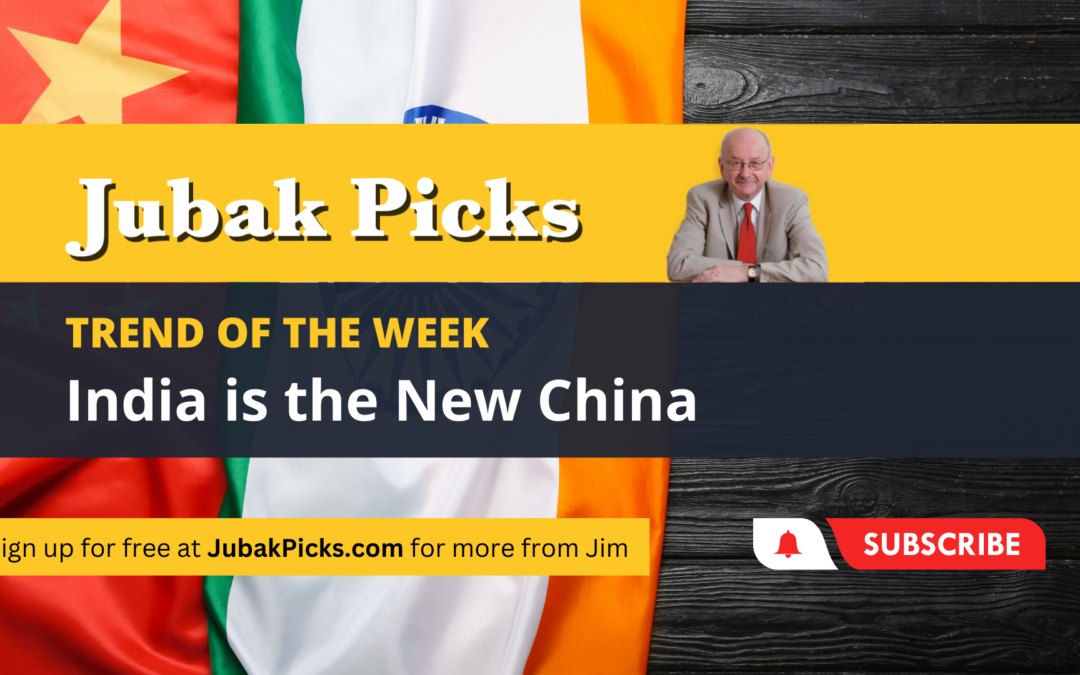
July 10, 2023 | Daily JAM, Videos |
Today’s Trend of the Week is India is the New China–in investing terms. Companies are looking to India for better prices and as a means of side-stepping the China and U.S. technology trade wars. For example, Apple is openly looking for suppliers in India, or asking suppliers to move from China to India, and other companies are following the path as well. Moody’s forecasts India’s GDP growth at 6% to 6.3% this year. I have two suggestions to get in on this trend. The first is the iShares MSCI India ETF, (INDA), which is up 5% year to date, but up 10-11% in the last three months. The other option is HDFC Bank, (HDB), much more volatile that the ETF, but also up 5% year to date and up 8% in the last three months. HDFC Bank is the biggest credit card issuer in India, with 28-29% market share. As wealth in India grows, more and more consumers are getting credit cards for the first time. HDFC also offers alternative platforms and payment technology that will also let the bank ride the technology wave in India’s financial sector. I don’t feel overly enthusiastic about investing in India as a whole. The country has an incredible, increasing reliance on coal, and the economy is riddled with special deals that favor family-run conglomerates with ties to the government. Buying the whole Megillah makes me a little leery, but I like INDA and HDB to get in on sentiment that sees India as the new China for investments.
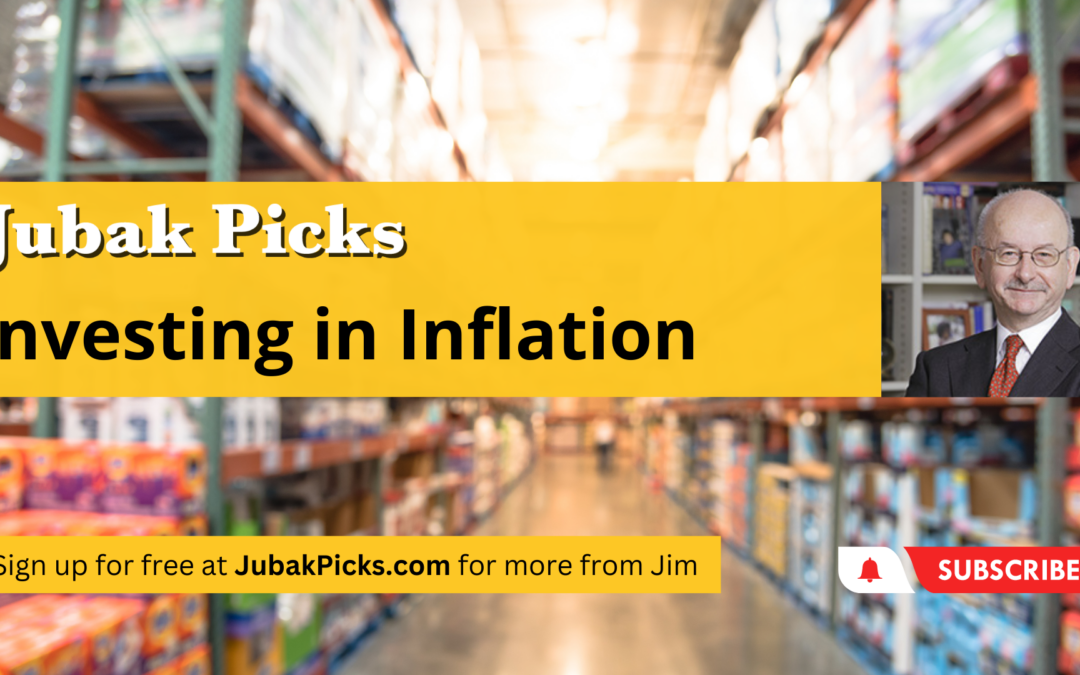
July 6, 2023 | Daily JAM, Videos |
Today’s video is Investing in Inflation. I went shopping at Costco and Target on the Saturday before July 4 and didn’t buy anything at either store.But for two very different reasons. Costco was mobbed with lines longer than I’ve ever seen and Target was nearly empty, as were many of its shelves. While Target does sell some groceries, it’s not a destination for bargain-hungry food shoppers that Costco is. Headline inflation–or “all-item” inflation–is down, but core inflation, which includes food, is still at 5.3%. That’s enough price inflation to hurt and consumers are looking to focus on saving pennies and dollars at a store like Costco. A comparison chart of Target and Costco stocks shows a huge divergence in May between the two retailers, with Costco marching steadily up, and Target diving down. I don’t expect core inflation to come down dramatically any time soon, so investing in inflation is a good bet here. Check back tomorrow for a stock play on high core inflation.
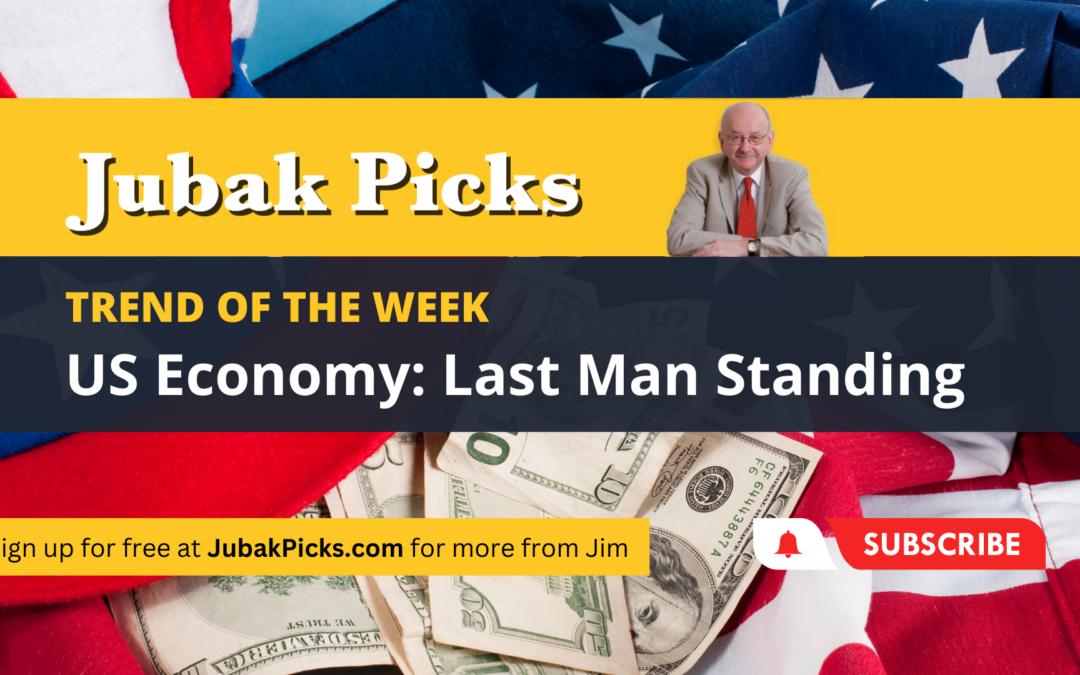
July 3, 2023 | Daily JAM, Videos |
Today’s Trend of the Week is U.S. Economy Last Man Standing. The U.S. economy is moving along at a surprisingly positive rate given the Fed’s repeated rate increases. Earlier in the year I expected a summer recession, but that no longer appears to be the case. We may see a recession later in the year, but as of now, the U.S. economy hasn’t dropped into a negative quarter–and the U.S. economy looks like the strongest in the world. Which my not be saying much. China is growing faster by the official numbers, but it needs to maintain at least a 5% growth rate to keep up with population growth. At the moment, with 4% growth, China’s unemployment rate for 16-24 year-olds is over 20%. This has led to country-wide dips in consumerism and has hammered the overall economy. We’re now seeing a slowdown in the EuroZone. The European Central Bank announced that they’re still seeing 6% inflation and raised interest rates by another 25 basis points. This policy is likely continue as the central bank tries to reach a 2% inflation rate. Growth in the EuroZone has been down for the last five months, and hit a new low in June. The Purchasing Managers Index (PMI) fell to 50.3. 50 is considered the break points between contraction and expansion. There’s a good possibility that the second quarter could be negative for the Eurozone, bringing the bloc closer to a recession. With China and the eurozone flailing economically, the U.S. economy is the last man standing.
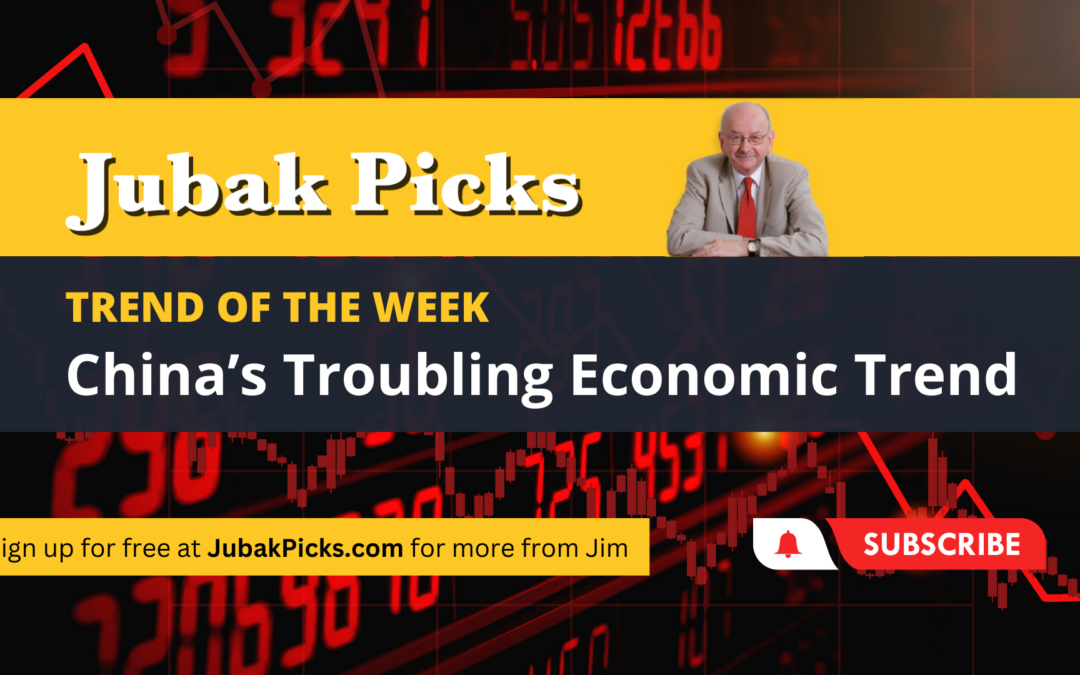
June 26, 2023 | Daily JAM, Long Term, Videos |
Today’s Trend of the Week is China’s Troubling Economic Trend. This graduation season is highlighting the economic problems China is facing. The 16-24-year-old Chinese demographic went to college as a way of delaying entering the job market during COVID, with the expectation of a guaranteed job upon graduating. The bad news is those jobs have not materialized. Unemployment for the 16-24 year age group was up to 20.8% in May, even higher than April’s shocking number. These Chinese college graduates have recognized this problem and have started a movement called “lying flat.” These potential consumers, they say, will not be buying houses, or cars but instead, will cut consumption. This negative view of the future trend in the economy has spread to all demographics and has led to people hoarding cash. The People’s Bank of China has cut short-term interest rates and the state council has suggested another stimulus package is coming. These factors could give Chinese stocks a bump up, but won’t get to the heart of the economic problem or bring the country’s growth above 5%. I’ve switched my international diversification to South Korea from China on JubakAM.com because I believe this economic trend is a long-term issue and that these problems are deeply embedded in the Chinese economy.
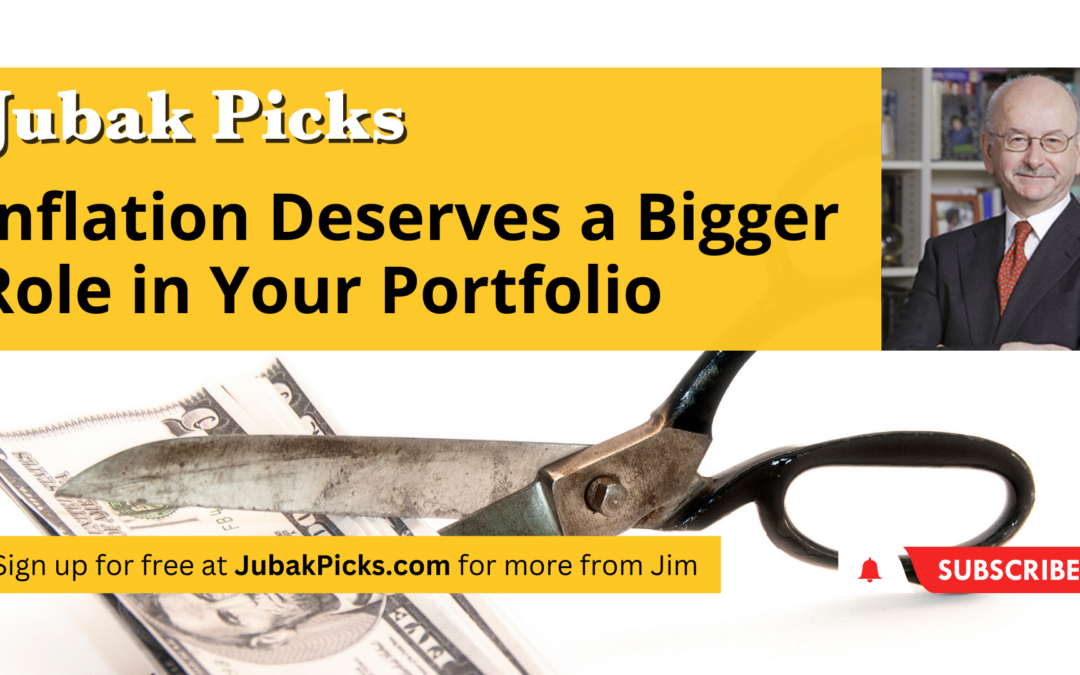
June 21, 2023 | Daily JAM, Videos |
Inflation deserves a bigger role in your portfolio. This vase of peonies reminds me of my first summer job: picking Japanese beetles off of my uncle’s peonies. He would offer what sounds like a not-so-generous salary of 25 cents per jar of dead beetles. But remember that’s 25 cents in 1960 or so. In thinking about inflation, I researched how much 25 cents in 1960 would be equivalent to today. 25 cents in 1960 amounts to $2.53 a jar. Still not terribly generous, but better. $100 in 1960 would be worth $1009 today, a ten-fold increase due to inflation. The Fed is still at work to stem inflation, but investors should note that there are some prices that the central bank can’t control. Inflation is built into the global climate economy with disruptions in agriculture, and new kinds of energy production (which will require higher costs), supply chain issues, not to mention that climate change is making some previously habitable places uninhabitable. All these problems will lead to extraordinary sources of inflation that are not susceptible to central bank policies. In order to hedge that inflation, make sure your portfolio, especially if it’s a long-term portfolio, has positions in things like gold or copper and lithium which will be in high demand and short supply in the next decade (at least.)















